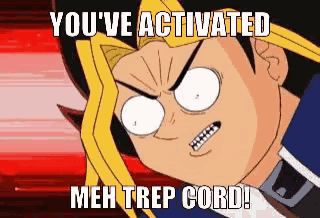Devlog - Standing on the Shoulders of Giants
Jun 18, 2025 - Standing on the Shoulders of Giants.
Typically when I start making something, I just try to push it as far as I can before really doing anything public-facing online. Instead, mostly due to the inspiration of this project having such a cool devlog, I’m going to try and do the same. I can get a little long-winded so bundle up with a nice blanket when you read these things. This one might be especially long as I catch you up to speed so far…
I came across Mark S. Ball’s Collapsi a week or so ago through a random Reddit post. I’m not even sure it had more than 1,000 upvotes but I immediately pleaded with my long-suffering partner to join me at the table for a game. We had a pretty good time but I felt like I could try and push it forward in a few key ways. This is by no means a criticism of Mark’s original game, but more just a sort of “wishlist” for myself as I iterate on my own design.
Make the game just a smidge longer.
I felt like games in Collapsi ended just before any flashy strategy could emerge. And anyone who knows me knows that I have an almost Warholian love of pomp and flash.
Make the game “flashier.”
Whenever I make something, I’m a little bit obsessed with the thought that someone can discover a specific set of actions that can outsmart even the best equipped opponent. I chalk this up to my Abuelita Esperanza who taught me a simplified version of the Spanish game Chinchón which only ended with a player breaking tense silence to announce that they won and you were wasting your time the entire game. My abuelita would crush me each time and without mercy.
I want trap cards, dang it!
When I was around 14, I attempted at whipping together this utterly terrible area control game I called “HexWar.” It was effectively a beefed-up version of the classic Snake involving setting traps and playing cards to move. The game sucked for many, many reasons but I’ve been wanting a game that felt good to outsmart your opponent in a very visible way. I also want an excuse to say “You’ve activated my trap card!”

Where are we now?
I read through Mark’s entire original devlog (and you should too. It’s great.) About halfway through, he touched on two concepts that I was really surprised didn’t get taken farther: a larger board and item cards. I decided to try out a 5x5 grid of cards. It felt like it was a good size but hard to set up intuitively with the odd number of cards, even when expanding the card count to include all 4’s and 5’s. When I was first setting this up, my partner offered to just stick an empty spot directly adjacent to the first three 3’s. It was only after she said that that we realized that was a brilliant way to remember it: “three spaces, three 3’s.” Those empty spaces should allow more complex board states and I get to flex my incredibly basic understanding of game theory. Math! Yeah!
I then started toying with the trap card idea, now called “Surprises.” Initially, I considered sliding cards underneath the tiles but that seemed too cumbersome. Instead I decided just to use tokens to represent their locations while still remaining hidden. At this point, I knew I needed to break out Ol’ Reliable – Tabletop Simulator (TTS) – to start making tokens.
I chose four tokens because it seemed to be a nice middle ground between “getting hit with surprises a lot” and “not having to get hit with surprises if you really didn’t want to.” Seeing as there were four tokens, it just made sense to base them off of the four suits of playing cards. And if that’s the case, just stick them on the Aces.
I fiddled with surprises being immediately activated. But after a few playtests with my partner, she noticed that it didn’t seem very fun to place a surprise card down just to pick it back up four seconds later. So I decided to take a page out of Magic: The Gathering’s book and force everything to come in deactivated until after your turn ends. I probably need to alter the turn structure but I’m happy so far.
Then came the cards. I want to cry.
The Cards.
I knew I wanted item cards for the simple reason that item cards are fun. I know: What a brilliant game designer observation. But get off my back, you’re not my mom, I can stay up late on a school night, and I don’t give a hoot. (In all honesty, it’s totally fair to call out my blind adherence to existing design norms but this just sounded fun. If it sucks, I’ll change it.)
Luckily, it didn’t suck!
I initially started out by editing a ton of Joker cards with a fantastic tool on the Tabletop Simulator Workshop called “Make Anything Editable.” If you use Tabletop Simulator even a little bit, you gotta try it out.
I’m not sure what the proper distribution of cards should be so I went with my gut and when I realized that it was pretty close to 32, I felt pretty pleased with myself. If all goes according to plan, I might be able to fit this in a single deck of 54 cards. I’d want to adjust the design of the item cards so they’re usable in a standard deck too but I’ll burn that bridge when I cross it. (…What?)
nanDeck vs. CIDEr vs Dextrous
If you’ve tried making a card game before, you’re probably familiar with nanDeck. It’s practically the standard in card prototyping. It’s… fine?... but it’s incredibly cumbersome. You practically need to code your entire deck in their custom language before you can get anything usable out of it. I’ve used it before, it works, but I don’t really enjoy it so I started looking around.
I stumbled on CIDEr next, an open source IDE for card prototypes that looks pretty nice and seemed pretty simple. I honestly can see this working great for some people but it also was requiring me to brush up on my old HTML skills that I thought I had left behind when I was making Anki flashcards. There wasn’t a ton of documentation on it either but I’m sure that’ll come with time as the developer works on it.
Finally, after my breakup with nanDeck, I found my rebound: Dextrous. It runs in your browser and seemed like it had all the functionality I wanted in nanDeck, like Google Sheets integration, and better documentation than CIDEr. I’m not thrilled about the monetization but at least it's not the worst that it could possibly have been so… hooray?

But it worked! It seems to make sense in my brain so I put together a set of all 32 item cards and imported it into TTS. To my surprise, they have super good integration with TTS so you can make changes pretty seamlessly, at least when compared to the alternative of importing a new deck every time you change something.
A board at the beginning of the game.
Moving Forward
That was a lot to cover but I’m pretty happy with the prototype so far! I’m paranoid that I jacked up the balance somewhere or that the entire thing is going to fall apart like many of my other projects but hey, that’s what the prototype stage is for. I’m planning on playtesting this a lot more with my partner and some TTRPG buddies of mine in the coming days. I’ll let you know how it goes next time.
~ Ezekiel
Rat Trick (Working Title)
| Status | Canceled |
| Category | Physical game |
| Author | EzekielJK |
| Genre | Card Game |
| Tags | Board Game |
More posts
- Final Announcement - Fun While It Lasted64 days ago
- Devlog - Getting Physical66 days ago
- Devlog - Rat Rewrites68 days ago
Comments
Log in with itch.io to leave a comment.
chinchón mentioned!